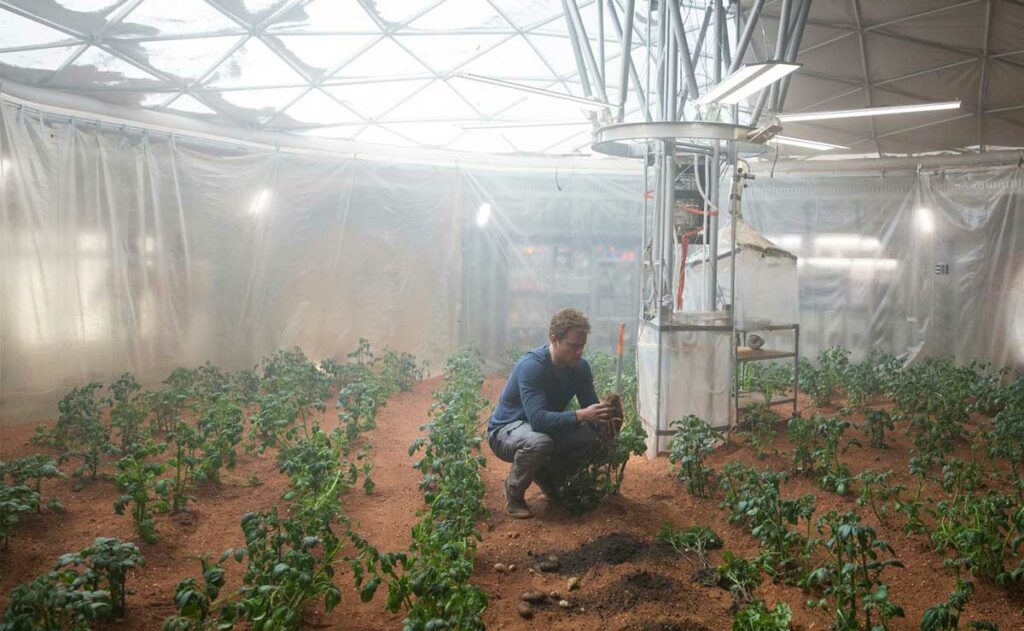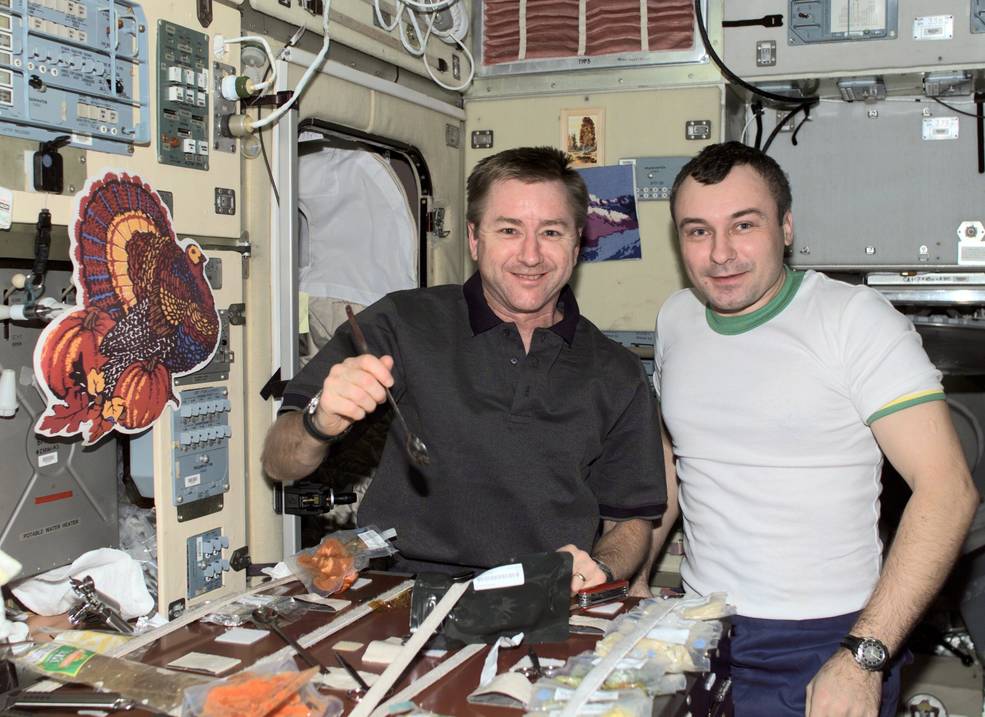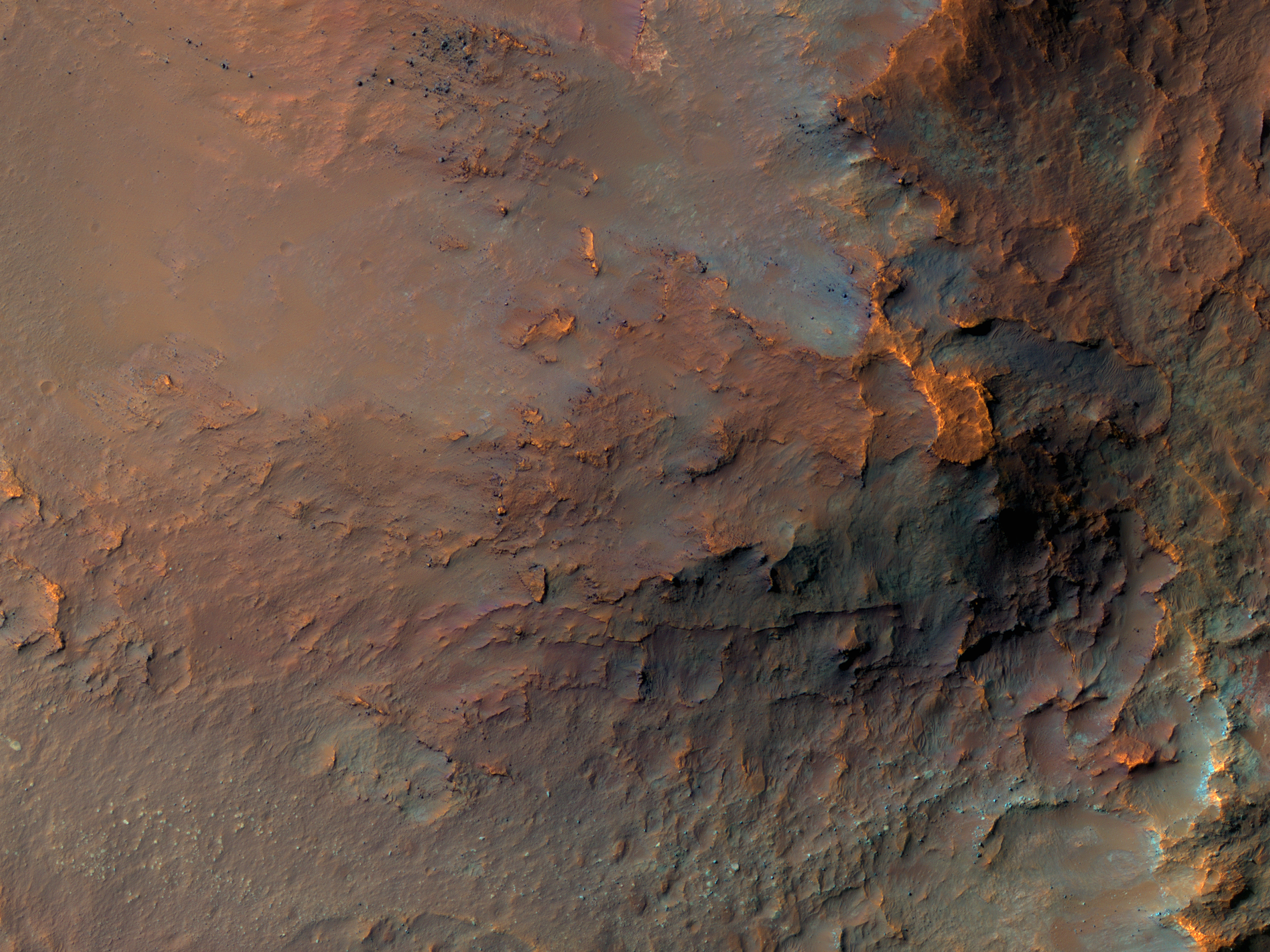Imagine for a moment that the year is 2035. You’re one of the astronauts embarking on Ares III—the third human mission to Mars. You’re exploring its surface with your crewmates when a massive dust storm hits: your equipment tips over, debris flies around, and you’re forced to abort the mission.
During evacuation, you’re struck by an errant antenna and swallowed by a cloud of dust. Believing you’ve been killed, your crewmates leave for Earth without you. The bad news is that you’re stranded on Mars. The good news is that you’re also a botanist and your crewmates left behind some thanksgiving potatoes.
Movies about space exploration—from 2001: A Space Odyssey and Apollo 13 to Interstellar and Ad Astra—have shown us out-of-this-world technology, cutting-edge space suits and extraterrestrial scenes. But until The Martian, none have taught us that surviving on the Red Planet might require a green thumb and an insatiable appetite for potatoes.
In Ridley Scott’s 2015 The Martian (adapted from Andy Weir’s popular novel of the same name), astronaut and botanist Mark Watney may not have embarked on Ares III knowing it was going to be “The Great Spud Adventure.” But improvising a potato farm on Martian soil is exactly what helps him survive alone on Mars for over a year.

According to Dr. Scott Engle, an astrophysics and planetary sciences professor at Villanova University, Martian soil would be difficult to farm on but not impossible. Scientists refer to the soil as regolith, meaning it contains dust, rock fragments and iron oxide (rust) which causes the soil and atmosphere to look red. This composition makes it an inhospitable environment for plants to grow in.
Ralph Fritsche, the Space Crop Production Project Manager at NASA agrees, adding that Martian regolith also contains perchlorates, a type of chemical hazardous to the human body. Not only would perchlorates make it harder for plants to grow, it could also make the plants that do grow toxic for consumption.
Although perchlorates are not mentioned in The Martian, Dr. Engle shares that rinsing the regolith or using perchlorate-eating bacteria could remove this chemical.
But plants need more than soil to grow. As Dr. Engle reminds us, Mars is incredibly cold and lacks other essential nutrients for plants to grow like water, sunlight and oxygen.
Both Dr. Engle and Ralph say that Martian regolith would need to be mixed with fertilized soil to sustain plant life. And Dr. Engle adds that an artificially controlled environment that can replicate optimal growing conditions would also be needed—in the case of The Martian, it’s a greenhouse that Mark Watney creates in the Hab.
Mark Watney turns the astronauts' artificial living quarters, the Hab, into an impressive makeshift greenhouse using plastic sheeting. He mixes Martian regolith with a small amount of Earth soil he brought with him, fertilizes it with feces from the Hab’s toilet, and burns hydrogen and oxygen to create water.
To his now viable soil, he adds the potatoes the Ares III crew brought along for a thanksgiving meal. As the potatoes grow, he gathers the big ones to eat and replants the smaller ones to multiply his harvest.
Ralph shares that while it’s not typical for astronauts to be sent on missions with Earth soil or even fresh produce (the food they carry is usually freeze-dried or irradiated for preservation), astronauts on NASA’s International Space Station can be sent food by cargo resupply vehicles.
In 1973, astronauts Gerald Carr, William Pogue and Edward Gibson, celebrated the very first space thanksgiving aboard Skylab, the first United States space station launched by NASA. Since then, their astronauts have routinely enjoyed freeze-dried mashed potatoes (not prepared by Mark Watney), irradiated turkey, and other November staples.

On the International Space Station, astronauts have also successfully grown lettuce and radishes using Veggie, a fresh-food production system that works with LED lights. But farming on or transporting food to another planet is a bigger undertaking—one that is still being worked on as experiments with Mars regolith simulants continue.
At Villanova University, Dr. Engle organized a garden project using Mars regolith simulant with an undergraduate astrobiology class. Along with fellow professor Dr. Edward Guinan, the project has since grown into a larger research project where participants will try to grow a variety of vegetables and herbs in the University’s greenhouse.
During its first run, students grew everything from sunflowers, mint, and kale to barley and hops. They also experimented with adding fertilizer to the Mars regolith simulant (minus the poisonous perchlorates) to examine the differences in plant production.
“Root vegetables had a difficult time growing because of how dense the regolith is,” Dr. Engle shares. “But when we added fertilizer, it loosened things up so we were no longer working with just packed down sand and rust.”
Ralph echoes this, saying simulant samples can compact down to the texture of concrete when it gets wet. "That makes it really difficult for the roots of plants to travel through them.”
As far as farming on other planets goes, Ralph isn’t sure if any can compare to Mars. “Mercury is too close to the sun, Venus’ temperature is hot enough to melt lead, Jupiter is a gas giant,” he says. “I think that Mars is it.”
Blast off into space with out-of-this-world stories and activities.
Train like an astronaut, simulate space missions, and build and test space technology.
